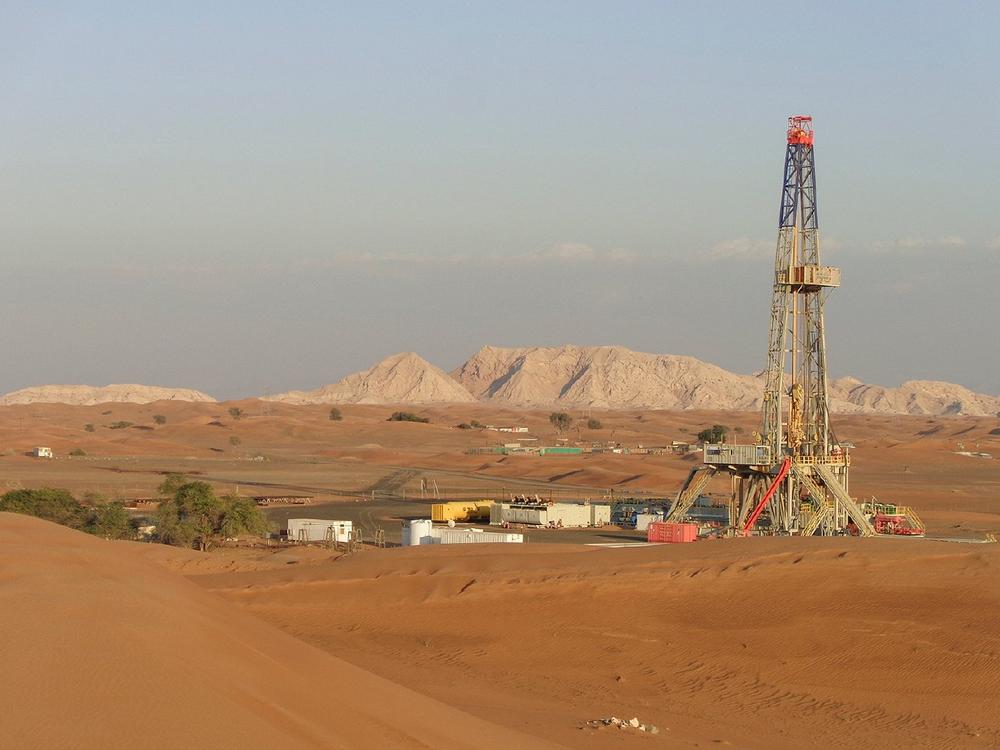A frictionless braking application
The drawworks on a drilling system consists of a large winch drum, brakes and a power source. It raises and lowers the drilling line as required, often to support the installation of piping as the borehole deepens. Brakes on the system stop the movement of the drilling line dynamically, while an additional friction brake holds it in the top position during the installation of a new pipe, before being released in a controlled manner to allow drilling to continue. Large braking forces are required from the system that stops the line. To present a further challenge, braking of the drawworks can take place frequently – every 180 seconds in some cases. Therefore, a system relying solely on friction to stop the line would quickly wear, greatly reducing service life.
For these braking applications, a frictionless solution is the only option. Eddy current brakes use electromagnetism instead of friction to provide the titanic braking forces and the durability required for this application. Stationary electromagnetic coils surrounding the magnetic core within the brake produce magnetic flux. These induce eddy currents in a rotating outer rotor, which has additional teeth poles that amplify the braking effect. The electromagnetic eddy currents created cause drag to the outer rotor, providing braking and dissipating the energy as heat. This allows large braking forces to be achieved repeatedly with high reliability.
The custom eddy current brake
A global manufacturer of drilling systems approached Stromag, a leading brand of Altra Industrial Motion Corp., to provide a custom eddy current brake to meet the specification of a bespoke drilling rig. The brake required was especially large and needed to offer reliable functionality in both arctic and desert environments – common in the oil, gas and geothermal sectors.
Michael Frank, Product Specialist, Clutches and Brakes at Stromag, explains: “We are a global leader in heavy-duty braking technologies. We offer a standard eddy current brake, the IBV, which is available in a wide range of sizes. After talking with the design and engineering teams at the drilling system manufacturer, and previously providing IBV 110 brakes for a smaller design, it was clear we needed to develop an entirely new IBV variant to suit the requirements of the larger equipment. In the end, we developed an ATEX-rated 6.5-tonne IBV 130 Eddy Current brake that provided a maximum braking force of around 70,000 Nm. This ensured optimum performance to meet the customer specification.”
Air-cooled
A key benefit of the IBV is that it is an air-cooled brake. This design can offer greatly reduced maintenance requirements compared to a water-cooled eddy current brake in certain drilling conditions. Unforeseen brake downtime due to maintenance on drilling systems is particularly undesirable, because the cost of maintenance as well as lost drilling time must be factored in.
“The potential reliability problems with water-cooled eddy current brakes are many,” Michael continues. “Water inside the drawworks braking system must be prepared with additional equipment, especially in freezing arctic conditions or in hot desert environments. This additional water preparation equipment has increased maintenance requirements. The water itself also presents an internal corrosion risk, which can greatly shorten the operational lifetime of the brake.”
Stromag designed the custom IBV to meet the defined airflow requirements of cooling fans supplied by the customer. This enabled optimum cooling for the system during operation.
A global brake expert
“As well as offering the global engineering capability to produce the custom IBV, as a leading brake OEM, we also provide convenient local access to any spare parts that are required. This means that, if required, customers can service IBV brakes in the field with increased ease,” Michael adds.
“Our capabilities ensure that we can meet demanding reliability and performance requirements. For the drilling systems manufacturer, this meant we could deliver a custom solution to an exact specification. This helps to ensure that drilling uptime is not compromised.”
Founded in 1932, Stromag has grown to become a globally recognized leader in the development and manufacture of innovative power transmission components for industrial drivetrain applications. Stromag engineers utilize the latest design technologies and materials to provide creative, energy-efficient solutions that meet their customer’s most challenging requirements.
Stromag’s extensive product range includes flexible couplings, disc brakes, limit switches, an array of hydraulically, pneumatically, and electrically actuated brakes, and a complete line of electric, hydraulic and pneumatic clutches.
Stromag engineered solutions improve drivetrain performance in a variety of key markets including energy, off-highway, metals, marine, transportation, printing, textiles, and material handling on applications such as wind turbines, conveyor systems, rolling mills, agriculture and construction machinery, municipal vehicles, forklifts, cranes, presses, deck winches, diesel engines, gensets and stage machinery.
Stromag GmbH
Hansastr. 120
59425 Unna
Telefon: +49 (2303) 102-0
Telefax: +49 (2303) 102-201
http://www.stromag.com/de-DE/
Telefon: +49 (2303) 102239
E-Mail: patricia.ullrich@stromag.com
![]()

